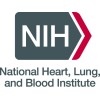
Carotid Artery Thickness in HIV Infected and Uninfected Adults
HIV InfectionsHIV Seronegativity1 moreThe intima-media thickness (IMT) test is a low cost, non-invasive way to measure the thickness of the carotid artery (the large artery in the neck). The purpose of this study is to compare the thickness of the carotid artery among HIV infected adults taking protease inhibitors (PIs), HIV infected adults not taking PIs, and HIV uninfected adults, and to examine how the thickness may change over time.

Genetics of Coronary Artery Disease in Alaskan Natives (GOCADAN)
Heart DiseasesCardiovascular Diseases4 moreTo document cardiovascular disease and cardiovascular disease risk factors among 1,200 Native Alaskans who are members of approximately 40 families.

Epidemiology of Plasma Fatty Acids and Atherosclerosis
AtherosclerosisCardiovascular Diseases1 moreTo measure by gas-liquid chromatography the relative concentrations of all saturated and unsaturated fatty acids found in the cholesterol ester and phospholipid fractions of plasma from 4,000 subjects participating in the Atherosclerosis Risk in Communities (ARIC) study. The data were used to clarify the role of various fatty acids in atherosclerosis.

Epidemiology of Coronary Heart Disease in Men Aged 40 and Over
AtherosclerosisCoronary Arteriosclerosis3 moreTo examine whether the prevalence of subclinical coronary and aortic atherosclerotic disease is different among Japanese in Japan, Japanese in Hawaii, and black and white Americans.

Neighborhoods and CVD Risk in a Multiethnic Cohort - Ancillary to MESA
Cardiovascular DiseasesCoronary Disease2 moreTo investigate if neighborhood characteristics are related to disease risk in a multiethnic cohort.

Coronary Artery Plaque Burden and Morphology in Type 2 Diabetes Mellitus.
Type2 DiabetesAtherosclerosis6 moreUnstable plaque, the primary cause of myocardial infarction, is characterized by distinct a morphology including positive remodeling (PR), low attenuated plaque (LAP), napkin ring sign (NRS), and spotty calcifications (SC) The purpose of the present study is to investigate the influence of microvascular dysfunction and additional risk factors on plaque morphology and plaque burden in patients with diabetes mellitus.

Investigation of Plaque Instability Using Bevacizumab-800CW and MSOT
AtherosclerosisCarotid Stenosis1 moreDetermining whether we could visualize uptake of the fluorescent tracer Bevacizumab-800CW, targeting VEGF-A in atherosclerotic plaques by using the new imaging technique Multispectral Optoacoustic Tomography both in- and ex vivo.

Evaluate the Correlation of NIRS, ABI, Exercise, baPWV and Albuminuria With Peripheral Artery Occlusion...
DiabetesPeripheral Arterial Occlusive DiseaseBy utilizing Near infrared spectroscopy (NIRS), the local blood flow, tissue oxygenation (StO2), and recovery time of ischemic leg; can be determined. It is reasonable to standardize an easy, simple and safe Active Pedal Plantarflexion (APP) exercise test working load which can achieve the lowest StO2 and other parameters in ischemic leg through observation of NIRS. After standardized of an effective APP test, a determination of a new cutoff value of resting ABI in diagnosing PAD can probably be searched. Analysing the correlation of baPWV with ABI, atherosclerosis risk factors and parameters with atherosclerosis outcome. Observation the Sequential changes of baPWV, ABI and microalbuminuria after managing the atherosclerosis risks, and analyze their influence on the outcome of PAD, coronary artery disease(CAD) and cerebral vascular disease(CVA) outcomes.

Predictors of Subclinical Atherosclerotic Cardiovascular Diseases (ASCVD) in Patients With Inflammatory...
Inflammatory Bowel DiseasesHeart disease and failure are the major causes of mortality and morbidity worldwide, despite significant advances in medical technologies in the diagnosis and treatment of the disease. Cardiovascular disease may arise for various reasons including the steadily increasing incidence of obesity, type 2 diabetes, genetic, environmental, dietary and lifestyle factors. Besides all these, there is much evidence suggetsing that inflammation is an important player in the pathogenesis of heart disease, as well as atherogenesis and atherosclerosis.

The Effect of Coffee Consumption on the Serum Levels of Leptin, Folic Acid, and Vitamin B12
AtherosclerosisThe effect of coffee and body weight during the last 3 months on the level of leptin, folic acid, and vitamin B12
